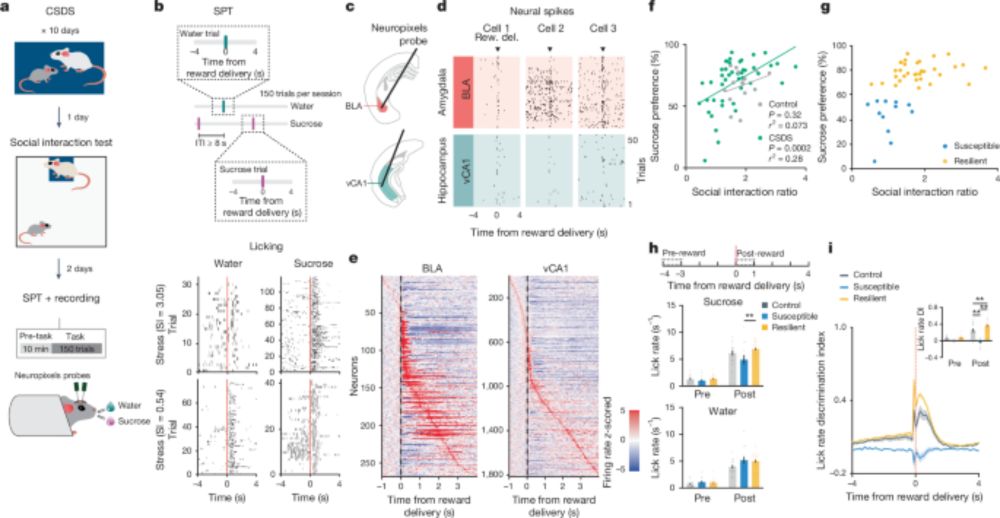What is the neural code and statistical structure of neural states characterizing stress?
Our new work in Nature answers these questions and more. Thanks to my amazing co-first @fxia.bsky.social @stefanofusi.bsky.social @mazenkheirbek.bsky.social for precious guidance
www.nature.com/articles/s41...
04.12.2024 18:03 — 👍 30 🔁 12 💬 1 📌 0
A beautiful work with a wonderful team! A lot of new ideas and a huge number of elegant experiments
04.12.2024 18:35 — 👍 17 🔁 3 💬 0 📌 0
Huge thanks to the dream team! Grateful for the support from @mazenkheirbek.bsky.social. Invaluable collaboration with my co-first @valeriafascianelli.bsky.social, and @stefanofusi.bsky.social. As well as Nina Vishwakarma, Frances Ghinger, Andrew Kwon, @markgergues.bsky.social, and Lahin Lalani!
04.12.2024 17:54 — 👍 3 🔁 0 💬 0 📌 0
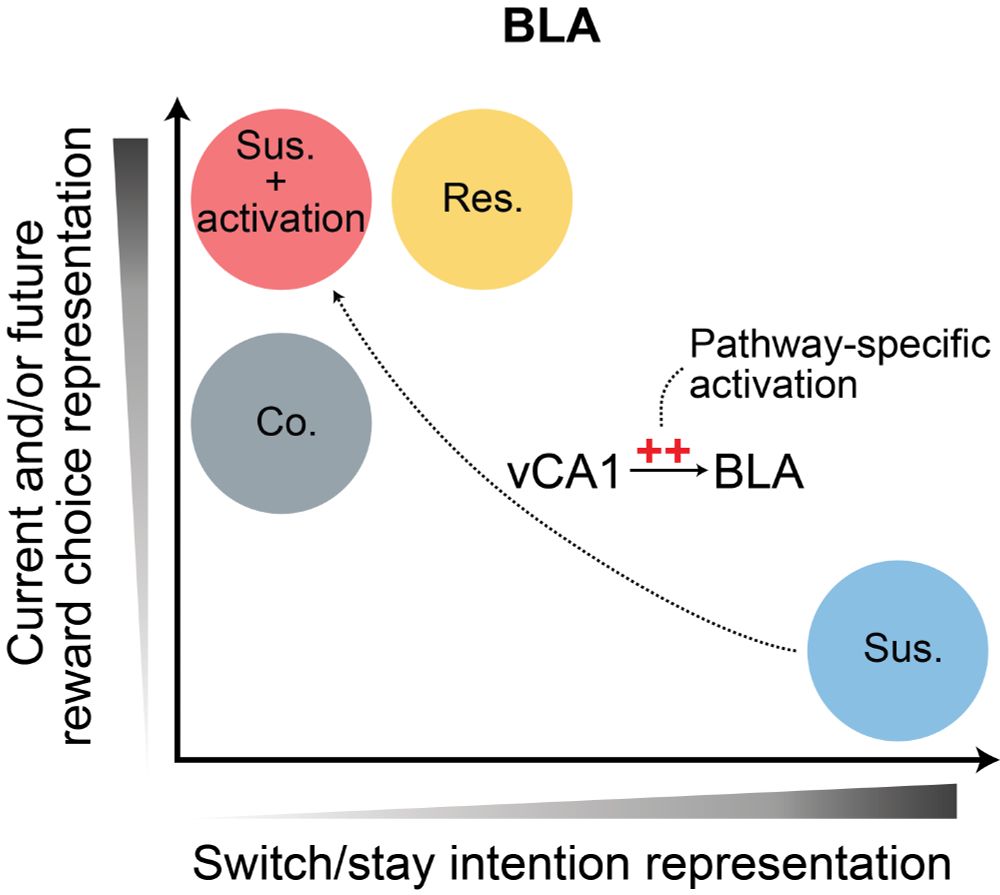
11/ In summary, we identified novel signatures of stress resilience and susceptibility in the BLA, and could rescue these dysfunctional neural dynamics and anhedonia in susceptible mice by manipulating vCA1->BLA inputs.
04.12.2024 17:52 — 👍 2 🔁 0 💬 1 📌 0
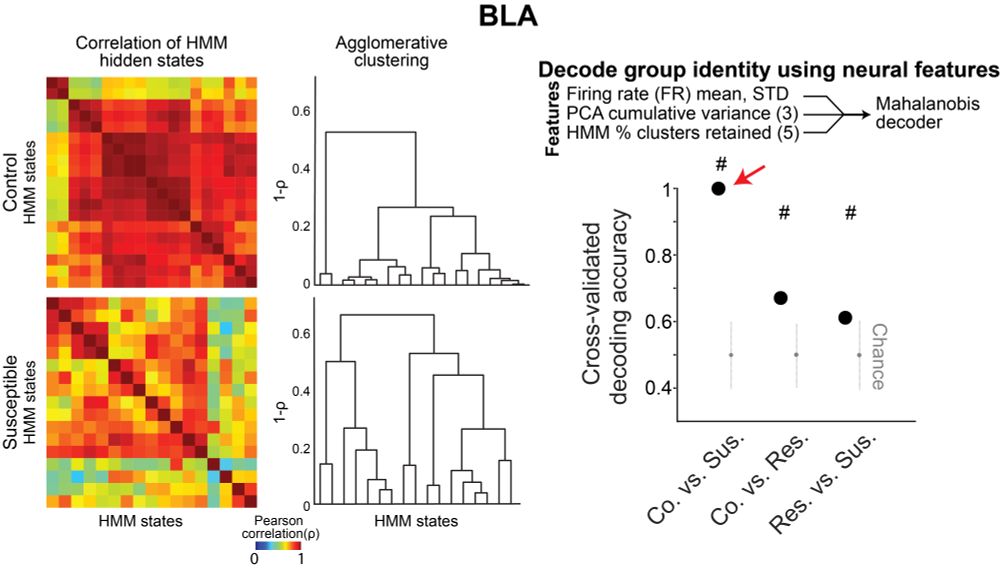
10/ We found that spontaneous activity of susceptible mice had a greater number of distinct neural states in the BLA compared to controls. Notably, spontaneous activity was better at distinguishing between susceptible, resilient, and control mice than classic behavioral measures.
04.12.2024 17:51 — 👍 4 🔁 0 💬 1 📌 0
9/ Inspired by human studies, we next asked if “resting-state” population dynamics differed between susceptible, resilient, and control mice. We compared population geometry using PCA and used Hidden Markov Model with agglomerative clustering to identify distinct hidden states.
04.12.2024 17:51 — 👍 2 🔁 0 💬 1 📌 0
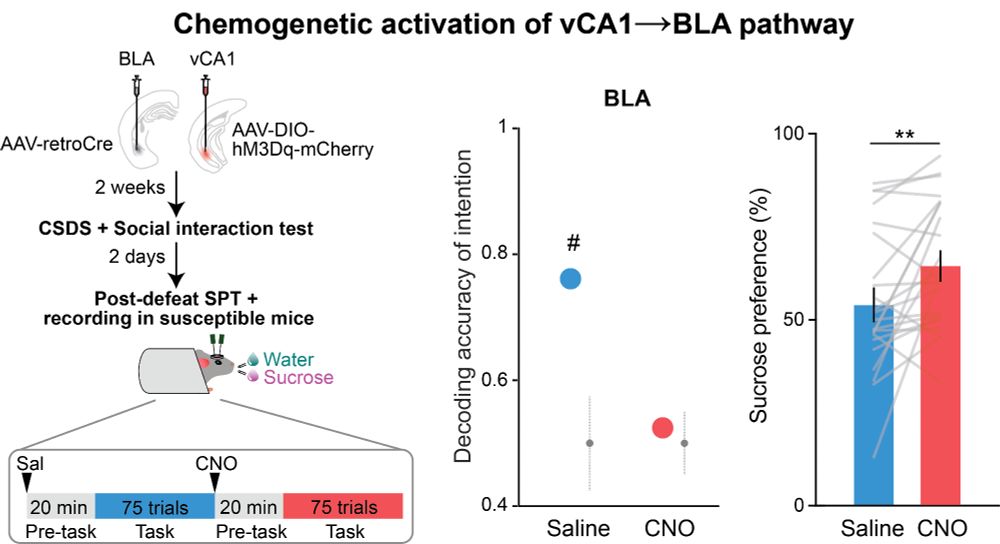
8/ Next, we modulated BLA activity by chemogenetic activation of the vCA1->BLA pathway. This rescued aberrant population dynamics and anhedonia-like behavior in susceptible mice, suggesting that targeting this pathway enhances BLA circuit function and rescues anhedonic behaviors.
04.12.2024 17:51 — 👍 2 🔁 0 💬 1 📌 0
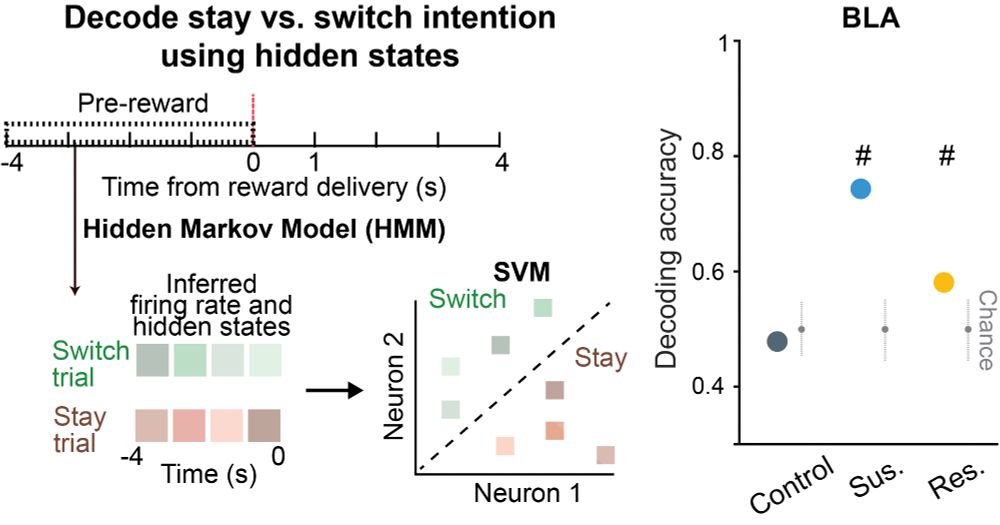
7/ Are there neural representations that reflect the intention of mice to switch or stay on the same reward choice as the previous trial? Yes! But only in the BLA of susceptible mice, reminiscent of rumination-like states commonly observed in individuals with depression.
04.12.2024 17:50 — 👍 4 🔁 0 💬 1 📌 0
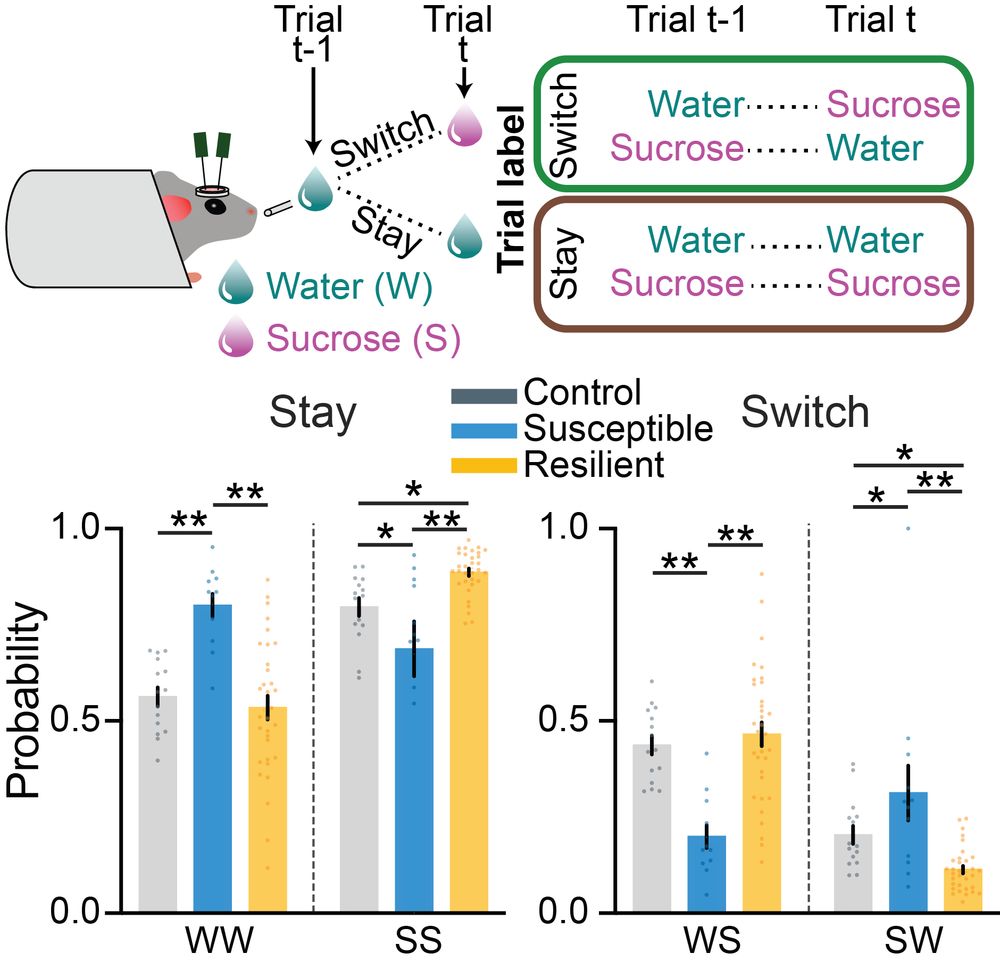
6/ We next examined the origins of anhedonic behavior in susceptible mice by analyzing the sequence of reward choices. We found that the choice sequence was Markovian, where the probability of choosing water or sucrose depends on the choice in the previous trial.
04.12.2024 17:50 — 👍 2 🔁 0 💬 1 📌 0
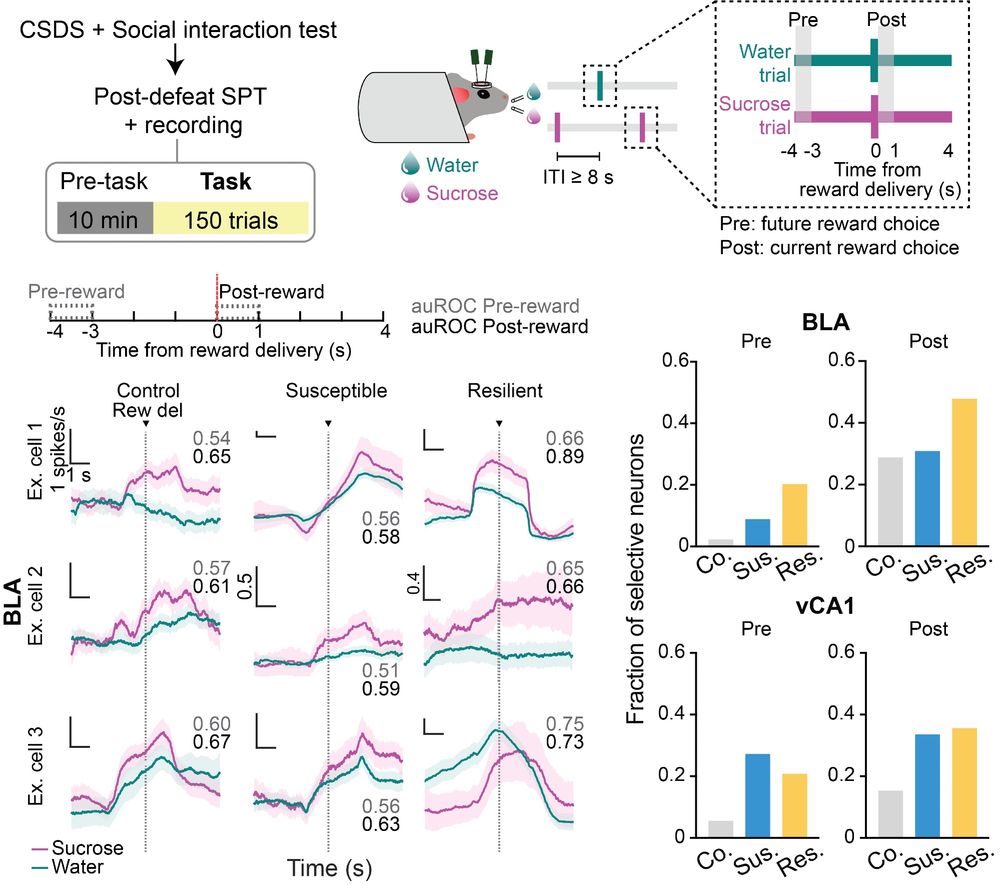
5/ We found enhanced reward choice (sucrose vs. water) representations at both single-neuron and population levels in the BLA of resilient mice as compared to controls and susceptible mice.
04.12.2024 17:48 — 👍 3 🔁 0 💬 1 📌 0
4/ Using behavioral measures, we identified mice that were resilient vs. susceptible to stress. As resilient mice showed stronger sucrose-seeking behavior, we first looked for specific adaptations in neural representations of reward-related information.
04.12.2024 17:48 — 👍 2 🔁 0 💬 1 📌 0
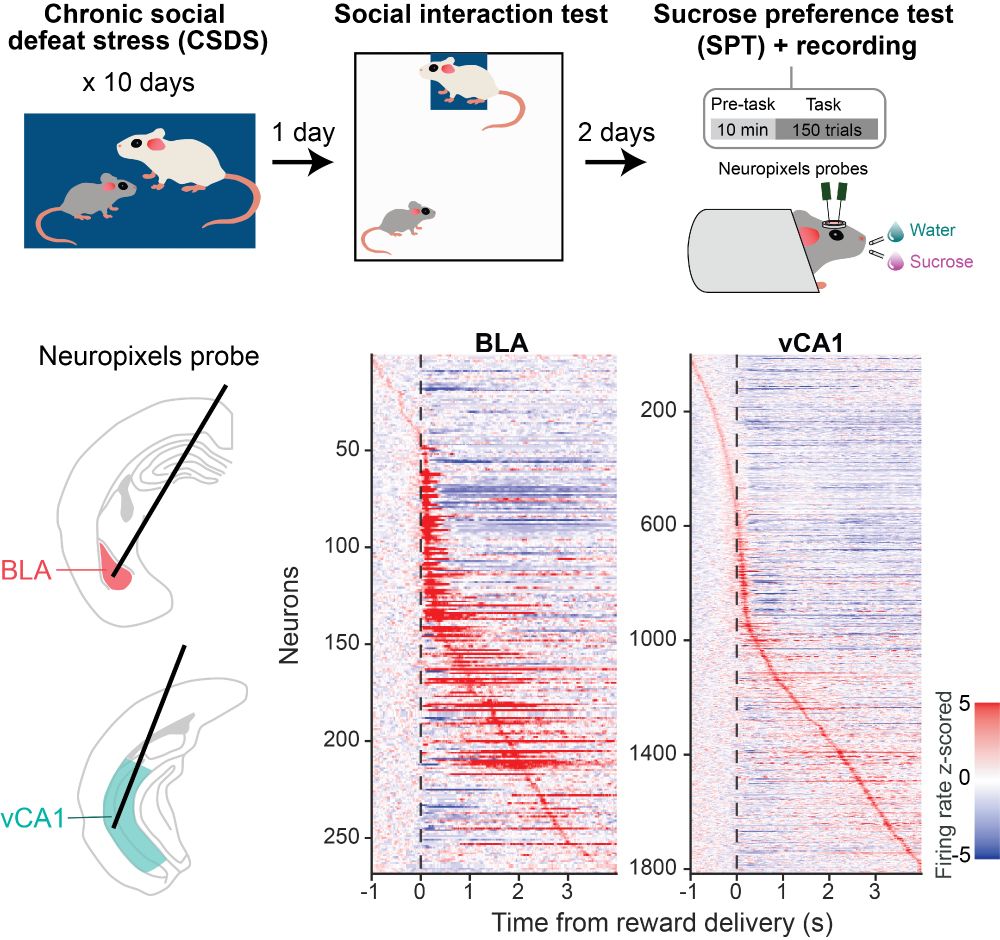
3/ We performed high-density Neuropixels recording in the basolateral amygdala (BLA) and ventral CA1 (vCA1) in mice following chronic social defeat stress while they performed a head-fixed sucrose preference task to assess anhedonia-like behavior.
04.12.2024 17:47 — 👍 2 🔁 0 💬 1 📌 0
2/ Here, we found that neural population dynamics in the amygdala, supported by the ventral hippocampus, can distinguish between resilient vs. susceptible mice following chronic stress during reward-guided decision making.
04.12.2024 17:47 — 👍 2 🔁 0 💬 1 📌 0
1/ It’s Saturday night, do you go out with friends or eat leftovers at home? If feeling down, you might choose the latter. Past trauma can shape our emotional states that bias our decisions. But what are the neural dynamics? And what makes some resilient and others susceptible?
04.12.2024 17:47 — 👍 2 🔁 0 💬 1 📌 0
Excited to share our new paper out now @natureportfolio.bsky.social, where we identified neural signatures of stress susceptibility and resilience in the amygdala-ventral hippocampal network to enable control of anhedonia! <https://www.nature.com/articles/s41586-024-08241-y>
Thread below:
04.12.2024 17:46 — 👍 49 🔁 14 💬 2 📌 5
Neuroscientist at UCSF / PhD / Interoception / Body-Brain-Interactions / Emotions
Professor of Biology at University of Toronto Mississauga. Specializing in Molecular Neuroscience, RNA modifications, and being grumpy! All views expressed are my own.
Associate Professor and Canada Research Chair at University of Toronto Mississauga. Neuroepigenetics, Alzheimer's disease, memory
Neuroscientist/Psychiatrist at Columbia Psychiatry. Circuits. Stress susceptibility & resilience. Reward seeking. Oscillations
OCD Researcher. Psychiatrist. Nerdy Mom.
🇫🇷🏳️🌈 Post Doc @ ESPCI Paris with Gisella Vetere !
I may love food more than I do science
He/him/il/lui
#firstgen 🇨🇦 Assistant Professor @LoyolaChicago - The MNEME Lab: studying memory and neuromodulatory mechanisms • beh-systems neuro • stress, anxiety, addiction • she/her • stephaniegrella.com
UCL neuroscientist investigating the neural basis of contextual decision making. Views are my own.
Prof @uclnpp
lab website: www.macaskilllab.com
UCL profile: https://profiles.ucl.ac.uk/5194
also @macaskillaf@fediscience.org
Japan based neuroscientist, Team Leader at RIKEN Center for Brain Science, studying the neural basis of emotional learning & memory, adventure cyclist
Goats. Great science. Gruyere.
neuromodulation | opioids | neural circuits | addiction | psychiatric disorders
Postdoc (Stanford, Malenka Lab), PhD (Brown, Kauer Lab), postbac (NIDA, Shaham Lab)
When not sciencing, find me outside running and competing with the Impala Racing Team⚡️
Neuroscientist at ESPCI Paris, Professor of Neurobiology, studying memory and circuits. Genuinely curious about people's behavior.
veterelab.weebly.com
Neuroscientist, interested in all things motivation. UW Neurobiology and Biophysics. UW NAPE Center. Personal, unaffiliated, account.
https://www.goldenneurolab.com/
🧠 ucsf neuroscience postdoc
🍄 psychedelic researcher
🎨 www.twophotonart.com
🪡 weekend tattoo artist
Neuroscientist at UBC. I friggin love peppers. Early 90s hip hop. Saugeen yogurt and homemade granola. Former competitive swimmer.
Neuroscientist using electrophysiology to understand cognitive flexibility, the ACC, and hippocampus. It's all oscillations and vibes.
@UNLV
Associate Professor, CRC in Translational Neuropsychopharmacology, Open-Source Tools! Committed to knowing better and doing better!
MD/PhD neuroscientist/psychiatrist. Decision-making, addiction, multi-region ephys and imaging in vivo, novel optical methods for spatial transcriptomics https://sjulsonlab.org
Systems neuroscientist and psychiatrist at UCSF studying how inhibitory circuits and oscillations give rise to the emergent brain functions that underlie cognition and emotion.
Space, Sleep, and Spikes | Associate Prof @ McGill, Montreal Neurological Institute | Co-director, The Quebec Sleep Research Network
